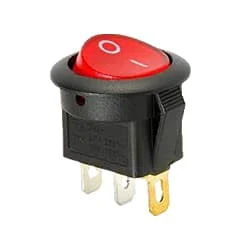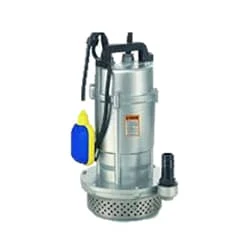Submersible Motor Control Box Wiring | submersible starter connection
Submersible Motor Control Box Wiring:
Submersible Motors are Sed In offshore Oilfields and are Mostly Closed-end Three-Phase Induction Motors Installed in a Steel tube that is Filled with Transformer oil, and whose Diameter Ranges from 1 to 0. Motor for Application in Submersible Pumps, Cisterns, Sewage, Rainwater Drainage, non-Fibrous Effluent Pumping, Industries, Wastewater Treatment Plants, and Water Tank Cleaning.
Diagram of Submersible Motor Control Box wiring:
 |
| Fig 1: Submersible Motor Control Box Wiring |
Components Need for this Project:
You can get the components from any of the sites below:
- Main Switch [See Buy Click Amazon]
- DPST Switch [See Buy Click Amazon]
- Overload Relay [See Buy Click Amazon]
- Capacitor [See Buy Click Amazon]
- Submersible Pump [See Buy Click Amazon]
*Please note: These are affiliate links. I may make a commission if you buy the components through these links. I would appreciate your support in this way!
$ads={1}Read Also:
Components used to make the Submersible Motor Control Box Wiring:
01. Main Switch
 |
| Fig 2: Main Switch |
The meter box records the electrical energy used by customers. The main switch provides protection to the electrical loads of the lighting circuit by means of fuses of various capacities. Main switches are protective devices for primary switching and safe machine control. They can be used, for example, as repair switches to quickly shut down large machines and systems so that maintenance work can be carried out safely. It allows you to turn off the power supply to your home. You May Have More Than one Mains Switch, for example, if you have an Electric Storage Heater in Your Home.
02. DPST Switch
 |
| Fig 3: DPST Switch |
The principle of DPST or Double Pole Single Throw Switch is to control two different circuits simultaneously using a single actuator like a pushbutton, toggle, etc. Both circuits are turned on or off. These switches have four terminals with two outputs and two inputs. It is possible to have different Voltages from different sources Connected to a single Double Pole Single switch. This switch accepts two inputs that can drive two different outputs in a circuit. They are essentially two SPST switches built as one, affecting separate circuits but controlled by the same actuator
03. Overload Relay
 |
| Fig 4: Overload Relay |
Overload relays are often used to protect the motor from excessive current flow. Overload relays are used to protect the motor from overheating. Besides some specific faults such as phase to phase, phase to ground, etc. overload relay provides protection to the motor. A thermal overload relay works on the principle of bimetallic strip electro-thermal characteristics. When the bimetallic heats up, the trip function in the overload relay turns on and disconnects the power supply to the contactor coil, thus tripping the overload relay and breaking the motor current and saving the motor.
04. Capacitor
.jpg) |
| Fig 5: Capacitor |
The purpose of the starting capacitor is to provide sufficient torque to start the motor and disconnect from the circuit after the motor reaches a predetermined speed. When voltage is applied to the motor without the start capacitor, the motor will make a humming sound. A start capacitor's capacitance range is between 70 and 120 microfarads. The Start Capacitor Increases The Motor Starting Torque and Allows The Motor to Cycle and run Faster. The Start Capacitor is Designed in Such a Way That it is Used for a Short Time. They cannot stay strong for long.
05. Submersible Pump
 |
| Fig 6: Submersible Pump |
All kinds of Submersible Pump Suppliers, and Full Global Submersible Pump Technology Support. Well-known submersible Pump manufacturer, global submersible Pump technology support. Sewage Pump. Screw Pump. Water Pump. Fire Pump. Styles: water pump, centrifugal pump, fire pump, sewage pump.All kinds of Submersible pump suppliers, and full global submersible Pump technology support. global submersible Pump technology support, Well-known submersible Pump manufacturer.
Thank You for visiting the website. Keep visiting for more Updates
$ads={2}
Frequently Asked Questions
How does a submersible pump control box work?
Protects submersible pumps from low and high voltage, a drop in water level, low yield wells, clogged well screens, malfunctioning pumps or motors, and rapid cycling. Pump control boxes usually have microprocessors that monitor power supply-line voltage and pump motor power supply draw.
Which wire is used in the submersible motor?
Polypropylene insulation was generally used for water-tight insulated magnet wire for submersible motors. A nylon sheath was used for mechanical protection over the polypropylene insulation layer. Hitachi uses specially developed Denatured polypropylene which offers very stable and waterproof characteristics.
How is the submersible pump connected?
Submersible Motors are supplied with a three-core PVC insulated flat cable of length 3 meters. The free end of the three-core cable of the motor needs to be connected to the power supply cable from the control panel. As this joint was always nearly submerged in water, the joint needs to be waterproof.
What are the 3 wires on a submersible pump?
In a three-wire well pump configuration, the motor is connected by a black, red, yellow, and green (ground) wire. 3-wire pumps utilize a separate control box outside the pump that houses the important starting components, which are usually mounted on a nearby wall above the ground.
Does a 2 wire well pump need a control box?
For example, if a capacitor malfunctions on a 3-wire, just the capacitor itself will need to be replaced. 2 wire well pumps do not use a control box. All the elements already come built within the motor and pump house itself. This allows for easier installation.



.jpg)



Post a Comment
Do leave your comments